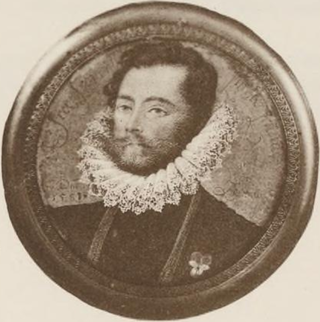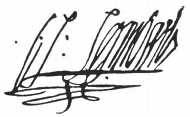James Hamilton, 1st Earl of AbercornPC (S) (1575–1618) was a Scottish diplomat for James VI and an undertaker in the Plantation of Ulster, Ireland.

Charles Blount, 1st Earl of Devonshire, KG was an English nobleman and soldier who served as Lord Deputy of Ireland under Queen Elizabeth I, and later as Lord Lieutenant of Ireland under King James I.

Earl of Effingham, in the County of Surrey, is a title in the Peerage of the United Kingdom, created in 1837 for Kenneth Howard, 11th Baron Howard of Effingham, named after the village of Effingham, Surrey, where heads of the family owned the manor.

Thomas Howard, 1st Earl of Suffolk, of Audley End House in the parish of Saffron Walden in Essex, and of Suffolk House near Westminster, a member of the House of Howard, was the second son of Thomas Howard, 4th Duke of Norfolk by his second wife Margaret Audley, the daughter and eventual sole heiress of Thomas Audley, 1st Baron Audley of Walden, of Audley End.

Earl of Cavan is a title in the Peerage of Ireland. It was created in 1647 for Charles Lambart, 2nd Baron Lambart. He was made Viscount Kilcoursie, in the King's County, at the same time, also in the Peerage of Ireland. Lord Cavan was the son of Oliver Lambart, who had been elevated to the Peerage of Ireland as Lord Lambart, Baron of Cavan in the County of Cavan, in 1618.
Randall MacSorley MacDonnell, 1st Earl of Antrim, PC (Ire), rebelled together with Tyrone and Tyrconnell in the Nine Years' War but having succeeded his brother, Sir James mac Sorley MacDonnell, as Lord of the Route and the Glynns in 1601, he submitted to Mountjoy, the Lord Deputy of Ireland, in 1602.

Henry Folliott, 1st Baron Folliott (1568–1622) was an English soldier in the Irish army. He fought in the Nine Years' War and then in the suppression of O'Doherty's rebellion at the Siege of Tory Island.
Roger Cavan Lambart, 13th Earl of Cavan, is a hereditary peer.

Frederick Edward Gould Lambart, 9th Earl of Cavan KP, PC, DL, JP styled Viscount Kilcoursie until 1887, was an Anglo-Irish Royal Navy officer and Liberal politician. He served as Vice-Chamberlain of the Household in 1886 in William Ewart Gladstone's third administration.

John Petre, 1st Baron Petre was an English peer who lived during the Tudor period and early Stuart period. He and his family were recusants — people who adhered to the Roman Catholic faith after the English Reformation. Nevertheless, Lord Petre was appointed to a number of official positions in the county of Essex.

Sir Robert Mansell (1573–1656) was an admiral of the English Royal Navy and a Member of Parliament (MP), mostly for Welsh constituencies. His name was sometimes given as Mansfield and Maunsell.

Henry Danvers, 1st Earl of Danby, KG was an English soldier. Outlawed after a killing, he regained favour and became a Knight of the Garter.

Sir George Carey, JP, DL, of Cockington in the parish of Tor Mohun in Devon, England, was Lord Deputy of Ireland from May 1603 to February 1604.
Lambart is a surname. Notable people with the surname include:

Thomas Gerard, 1st Baron Gerard was a Staffordshire and Lancashire landowner and politician, a member of six English parliaments for three different constituencies. Although a prominent member of the Essex faction in the reign of Elizabeth I, he avoided involvement in the Essex Rebellion and received greater honours, including a peerage, in the reign of James I.

Thomas Ridgeway, 1st Earl of Londonderry was an English administrator active in Ireland, in particular in the Ulster Plantation.
Thomas Grey, 15th Baron Grey de Wilton was an English aristocrat, soldier and conspirator. He was convicted of involvement in the Bye Plot against James I of England.

Charles Lambart, 1st Earl of Cavan was an Anglo-Irish Royalist soldier and peer.
Garret Moore, 1st Viscount Moore PC (I) was an Anglo-Irish politician and peer.
Sir Robert Digby PC(I) was an English courtier who owned an estate at Coleshill, Warwickshire. His marriage to Lettice FitzGerald, heir-general to the 11th Earl of Kildare, led him to spend his life litigating over her claims to the Kildare lands. He divided his time between local business in Warwickshire and in Ireland.













